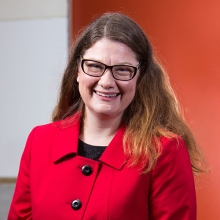ETL Ignite: Collaborating for Transfer
This post is one of a series that stems from our 4th Annual Educating Tomorrow's Lawyers Conference. The author(s) presented a six-minute Ignite-style presentation at the conference that discussed the innovations and outcomes of their school’s classes, programs, or curricula—or within the realm of legal education more broadly. The videos will be available here and in our Resources section as they become available.
At Seattle University School of Law, our goal is to have a comprehensive, integrated skills curriculum. We feel good about our curriculum’s comprehensiveness; we have focused in recent years on integration. Our legal writing and clinical faculty in particular have collaborated extensively over the last several years, including holding a yearly joint retreat. We also collaborate on the Real Clients in the First Year Project, where our first-year legal writing students work on a slice of a pending clinical case or on a live issue from a legal nonprofit.
Despite these collaborations, we find that our students sometimes struggle to transfer what they learn in legal writing to their work in clinics or externships. Because of our collaborations, though, we all know that our students have learned more than they are transferring across courses.
We therefore held a “transference retreat” in August 2015, shortly before the start of the new academic year. The retreat brought together faculty teaching our first-year Introduction to Practice course, librarians, our academic support team, and the team from our Access to Justice Institute, as well as the clinical, externship, and legal writing faculty.
During the retreat, we asked participants to reflect on their own use of transference, then provided a brief overview of backwards planning, learning theory on transfer, and client counseling. Then, crucially, we broke the participants into interdisciplinary small groups and asked them to 1) backwards plan by identifying the client counseling skills/competencies our students should have at graduation, and 2) develop at least three interconnected exercises that would build on each other throughout the curriculum to help students develop those skills and competencies.
Watch the video of the presentation to learn more about the work produced at the retreat, the overwhelmingly positive feedback from participants, how material from the retreat is being implemented across the curriculum, and next steps to carry this work forward.
If you are interested in more information about the transference retreat or any of our collaborations, please feel free to contact me at bowmanm1@seattleu.edu.


